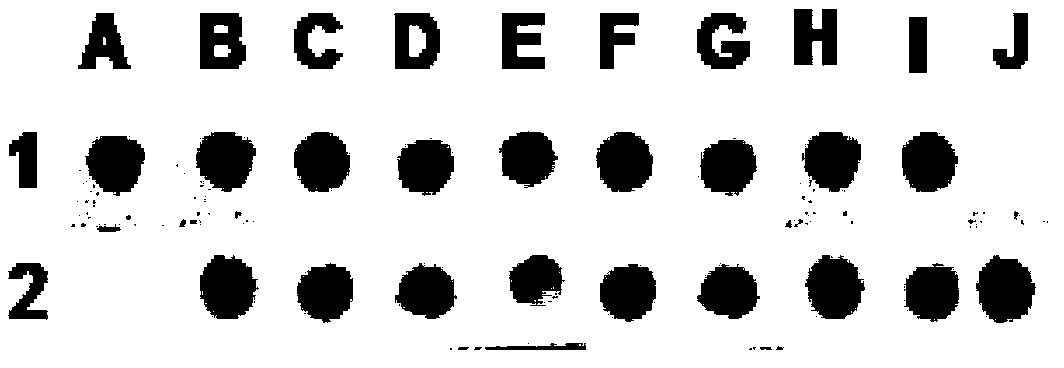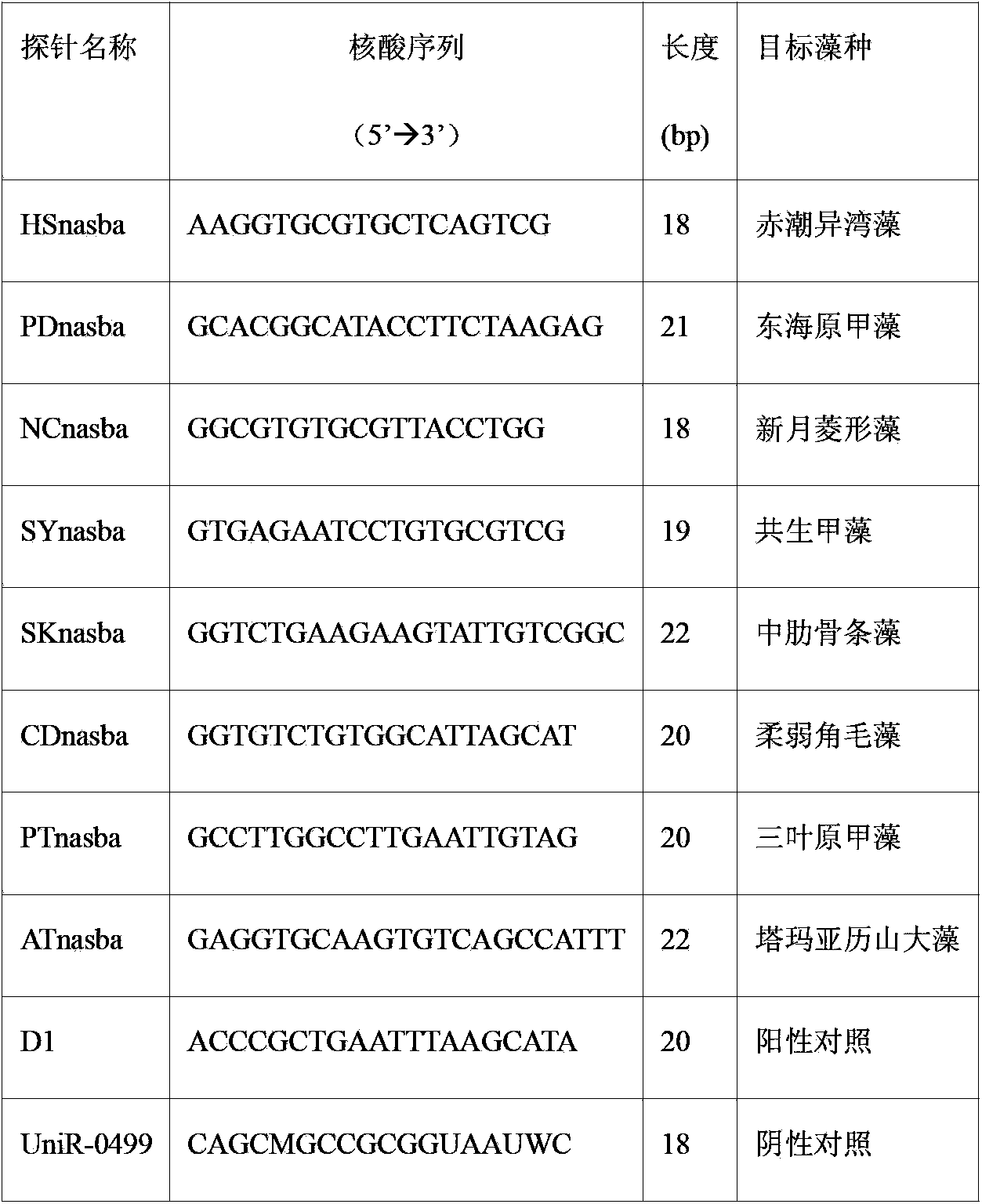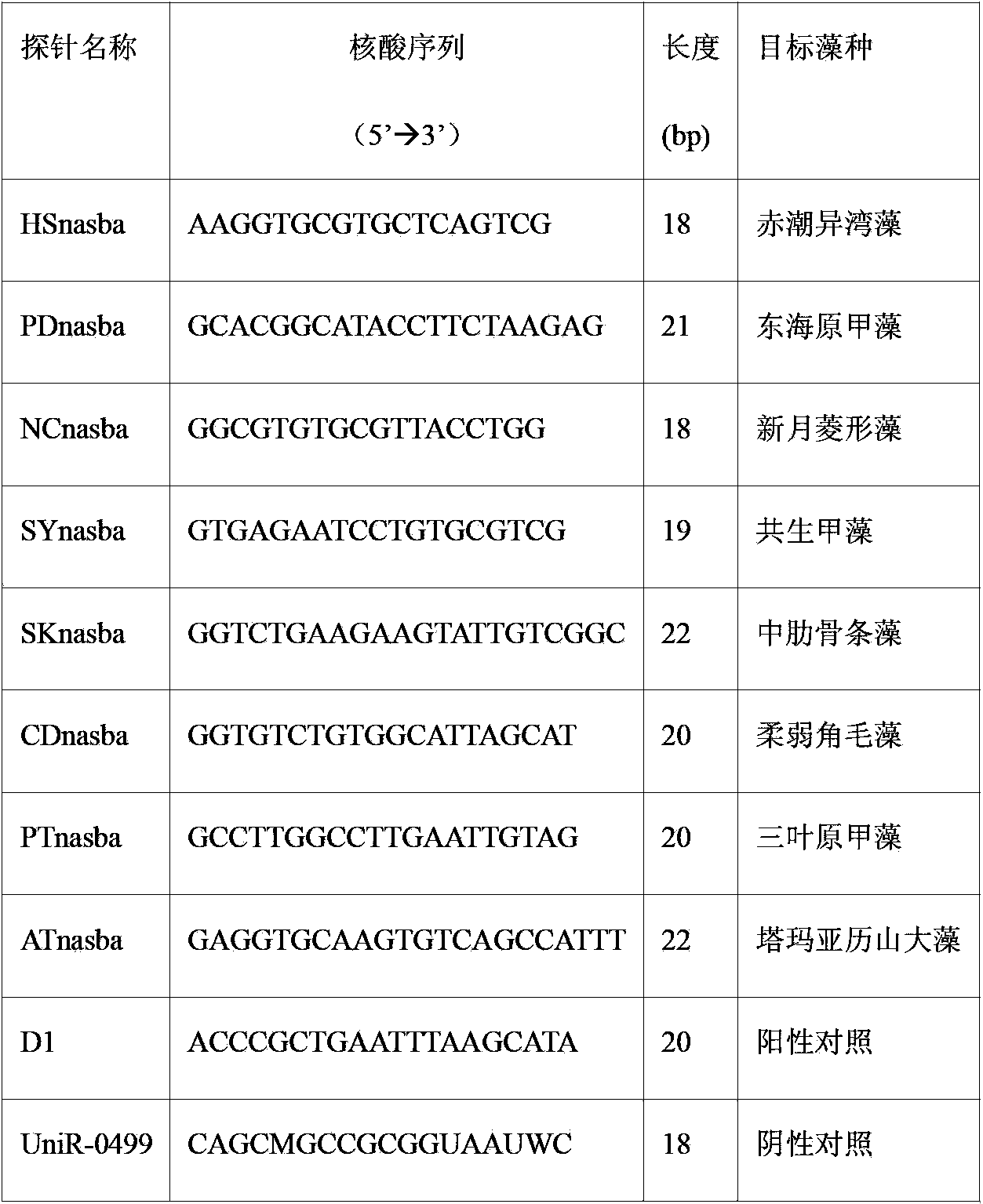Kit capable of simply detecting various red-tide algae in natural water samples
A technology of red tide algae and kit, which is applied in the field of kits for simple detection of various red tide algae in natural water samples, which can solve the problems of increasing the difficulty of red tide provenance identification, monitoring and early warning, low cell concentration, and difficult identification
- Summary
- Abstract
- Description
- Claims
- Application Information
AI Technical Summary
Problems solved by technology
Method used
Image
Examples
Embodiment Construction
[0046] The present invention will be described in detail below in conjunction with specific embodiments.
[0047] 1. Kit composition
[0048] 1.1 Membrane sorting gene chip strips, including the detection of Heterophyllum akashiwo, Prorocentrum donghaiense, Nitzschia crescentus, Symbiodinium dinoflagellates, Sclerotina mesocostalis, Chaetoceros tenifolia, Prorocentrum trilobites, and Alexandrium tamarina in total 8 Species-specific probes, negative control probes and positive control probes of red tide algae, with 2 repetitions for each probe;
[0049] Preparation method of membrane sorting gene chip strip:
[0050] (1) Synthesize detection probes according to the following sequence information (Table 1).
[0051] Table 1 Probe information
[0052]
[0053] (2) Dissolve the synthesized probe dry powder in 0.1M Tris-HCl (pH7.5) to prepare a solution with a concentration of 10μM;
[0054] (3) Use a soft pencil to draw grids on the nylon membrane through the backing paper...
PUM
| Property | Measurement | Unit |
|---|---|---|
| pore size | aaaaa | aaaaa |
| diameter | aaaaa | aaaaa |
Abstract
Description
Claims
Application Information
 Login to View More
Login to View More - R&D
- Intellectual Property
- Life Sciences
- Materials
- Tech Scout
- Unparalleled Data Quality
- Higher Quality Content
- 60% Fewer Hallucinations
Browse by: Latest US Patents, China's latest patents, Technical Efficacy Thesaurus, Application Domain, Technology Topic, Popular Technical Reports.
© 2025 PatSnap. All rights reserved.Legal|Privacy policy|Modern Slavery Act Transparency Statement|Sitemap|About US| Contact US: help@patsnap.com



